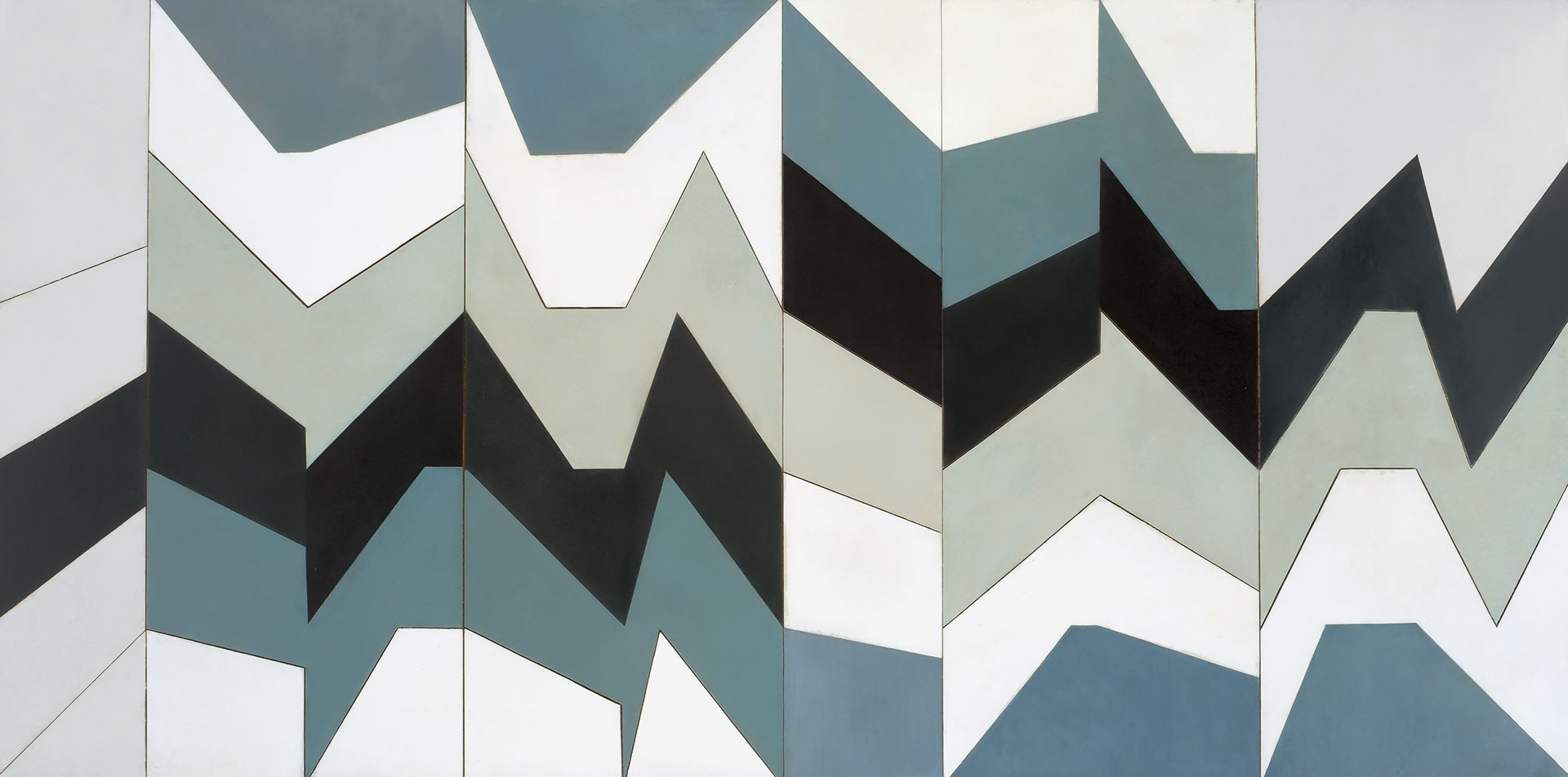Geometric Abstraction, 1953–1956
Upon Lygia Clark’s return to Rio de Janeiro in August 1952, Concrete art in Brazil was beginning to take form, first with the establishment of Grupo Ruptura (Rupture Group) in São Paulo in 1952, and later with Grupo Frente (Front Group) in Rio de Janeiro in 1954. Clark joined the latter group along with her contemporaries Aluísio Carvão, Willys de Castro, Hélio Oiticica, Lygia Pape, and Ivan Serpa. Like their counterparts in São Paulo, Grupo Frente absorbed the ideologies of European Concrete art and adhered to strict principles of pure form and objectivity as opposed to the naturalism and figuration prevalent in Brazilian early modernism. In particular, Clark embraced a unique geometric aesthetic in dialogue with the rise of modern geometric abstraction in Brazil and participated in the group’s exhibitions between 1954 and 1956.
This section features Clark’s precise geometric compositions of 1953 and other major series that propelled her to challenge the spatial conventions of the plane, such as Discovery of the Organic Line (Descoberta da linha orgânica, 1954) and Breaking the Frame (Quebra da moldura, 1954). Additionally, this section showcases three existing architectural models, Maquettes for Interior (Maquetes para interior, 1955), which exemplify the artist’s concept of a dynamic living space. Partly under the influence of her earlier teachers Fernand Léger and Roberto Burle Marx, these maquettes highlight Clark’s artistic investigations between art and architecture, which later evolved into easel paintings of flat, planar, and modular structures in her series Modulated Surfaces (Superfícies moduladas, 1955). By 1956, Clark embraced a more vibrant, colorful palette with abstract compositions comprising zigzag shapes, diagonal forms, sharp angles, and rhythmic patterns.




